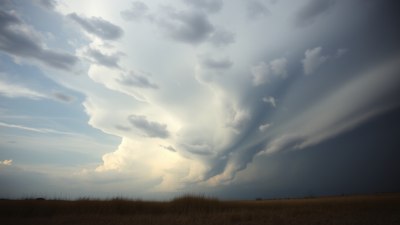How the Weather Changes What Music You Listen To
Explore how different weather conditions influence your music choices and affect emotions, moods, and listening habits.

Weather has a profound impact on human behavior and emotions, and this extends to the music we choose to listen to. Whether it's a bright sunny day or a gloomy rainy afternoon, the atmosphere surrounding us often dictates our mood, which in turn influences the genres and songs we prefer. This article explores how varying weather conditions affect music preferences and discusses the psychological and environmental factors behind this intriguing connection.
Sunny Days and Upbeat Tunes
When the sun shines brightly, people tend to feel more energetic, optimistic, and uplifted. The warmth and natural light boost serotonin levels, which can elevate mood and promote feelings of happiness. As a result, sunny weather often encourages listeners to choose upbeat, lively music. Genres such as pop, dance, reggae, and indie rock typically dominate sunny day playlists. Songs with fast tempos, catchy rhythms, and positive lyrics align with the elevated mood and help sustain the cheerful vibe.
Studies have shown that exposure to sunlight increases dopamine production, enhancing pleasure and motivation. Consequently, people are more inclined to seek out music that mirrors this positivity. Outdoor activities common on sunny days, like picnics, beach trips, or barbecues, provide perfect occasions for energetic tracks that complement the social and lively environment.
Rainy and Overcast Weather Inspire Reflective Sounds
In contrast, rainy and overcast days often steer listeners toward more introspective or soothing music. The subdued lighting and the sound of rain can evoke nostalgia or melancholy, leading people to gravitate towards genres like classical, jazz, acoustic, or slow ballads. These genres typically feature softer melodies, gentle harmonies, and emotionally rich lyrics, which resonate deeply during gloomy weather.
The psychological impact of rain often encourages individuals to slow down and reflect, making music an ideal companion for this mood. Rain sounds themselves have calming effects and are sometimes incorporated into ambient or chillout tracks to enhance relaxation. Thus, the auditory environment created by rain complements music choices that promote mindfulness and emotional processing.
Cold Weather and Comforting Melodies
During cold weather, particularly in the winter months, people tend to seek warmth and comfort in their music selection. This need often leads to choosing genres and songs that exude coziness, nostalgia, and serenity. Many turn to folk, blues, or soft rock, as these styles offer soothing instrumentation and heartfelt storytelling.
Cold temperatures can inspire solitude and introspection, prompting listeners to play music that feels comforting or that brings back fond memories. The slower rhythms and mellow tones of these genres can provide emotional warmth, counteracting the physical chill in the environment. Holiday music also enjoys elevated popularity during the colder seasons, as it connects listeners with festive traditions and communal warmth.
Hot Weather and Energetic Soundscapes
In hot weather, people often seek music that matches their increased energy levels or helps them cool down. Fast-paced genres such as electronic dance music (EDM), hip-hop, and Latin music become popular due to their infectious beats and rhythmic vitality. These genres encourage movement, dancing, and social engagement, which aligns with the outdoor and festive activities common during warm weather.
Conversely, some listeners might choose relaxing, tropical tunes or beach-themed music to mentally transport themselves to a cooler, breezy environment. Reggae, calypso, and bossa nova are examples of genres that evoke a laid-back vibe, helping listeners unwind from the heat. Thus, hot weather influences music preferences in a dual way: either amplifying energetic moods or soothing the senses.
Extreme Weather Events and Music Mania
Weather volatility, such as storms, hurricanes, or extreme heat waves, can influence music choices in unique ways. The heightened emotional states and anxiety during such events may push people to seek music for distraction, motivation, or emotional release. Some might turn to high-intensity music like rock or metal to channel feelings of frustration or power, while others opt for calming or spiritual music to regain inner peace.
In such times, music serves both a therapeutic function and a means of coping. For example, during long power outages caused by storms, acoustic and unplugged music becomes more prominent due to limited technology and the desire for simplicity. Additionally, music with themes related to resilience, hope, or endurance can resonate strongly during harsh weather conditions, providing encouragement and solidarity.
Seasonal Changes and Their Impact on Music Habits
As seasons transition, so do music preferences. Spring often inspires fresh and hopeful playlists, featuring vibrant, upbeat tracks symbolizing renewal and growth. Summer music tends to be energetic and fun, perfect for vacations and outdoor gatherings. Autumn brings a shift to mellower, reflective tunes, often with folk or indie influences, matching the mellowing natural world. Winter's cold and quiet encourages music that is cozy, rich in emotion, and often imbued with nostalgia.
This seasonal cycle of music preference highlights how weather not only influences momentary music choices but also shapes auditory habits over longer periods. Streaming platforms often reflect these trends in curated playlists and recommendations tailored to each season.
Psychological Theories Behind Weather-Music Connections
Several psychological theories offer insight into why weather affects music preferences. The mood-congruency hypothesis suggests that people seek music that matches their current emotional state, which is shaped by the weather around them. If the weather induces happiness, music that reinforces this mood is preferred; if the weather causes sadness or calmness, people gravitate toward corresponding styles.
Another relevant theory is environmental influence on arousal levels. Weather conditions affect physiological arousal — sunny days increase it, rainy or cloudy days decrease it — and people select music accordingly to either maintain, enhance, or moderate their arousal. For example, on a particularly lethargic rainy day, someone might choose energetic music to lift their spirits.
The Role of Cultural and Individual Differences
While weather broadly influences music choices, cultural backgrounds and individual differences mediate this effect. In some cultures, particular weather conditions are associated with specific musical traditions or activities, reinforcing the connection between weather and music. Personal experiences, memories, and personality traits also play substantial roles in determining how weather affects an individual's musical preferences.
For instance, someone living in a tropical climate might have less variability in weather-related music changes compared to someone in a region with four distinct seasons. Additionally, individuals with a disposition toward novelty may experiment with contrasting music styles regardless of weather, while others may be more consistent in matching their music to the environment.
Music as a Tool to Counteract Weather-Induced Mood Swings
Music is not only a reflection of mood shaped by weather but also a powerful tool to influence and modify mood. On gloomy days, upbeat and happy music can help counteract feelings of sadness or lethargy. Conversely, quiet and soothing music may help calm overexcitement or stress during extremely bright or hot conditions.
This use of music as mood regulation demonstrates its adaptability and the active role of listeners in selecting tunes that not only reflect but also manage their emotions in response to weather. Many people create mood-specific playlists tailored to different weather conditions as a form of proactive emotional wellness.
Technological Advances and Weather-Based Music Curation
Today, technology enhances the relationship between weather and music through apps and streaming platforms that offer weather-based music recommendations. These systems use local weather data to suggest playlists aligned with the current conditions, offering users a personalized listening experience that corresponds to their environment.
Such integrations acknowledge the natural connection between atmospheric conditions and auditory preferences, making it easier for listeners to find music that suits their mood and surroundings without conscious effort. Machine learning algorithms can predict which songs resonate best with users based on weather-induced moods, improving user satisfaction and engagement.
The Influence of Weather on Live Music and Festivals
Weather also impacts live music experiences and outdoor festivals. Music styles featured at events often correspond to the season and expected weather, with summer festivals favoring energetic and danceable genres to match the warm atmosphere. Conversely, indoor concerts during colder months might emphasize genres that create intimacy and emotional depth.
Adverse weather conditions can also affect attendance and the mood of crowds, influencing the overall experience and even the performers' repertoire choices. Artists may adapt their setlists to resonate with the weather conditions, creating a dynamic dialogue between the environment, audience, and music.
The interplay between weather and music is a testament to how deeply our environment shapes our emotional and cultural experiences. From sunny days filled with bright, fast-paced tunes to rainy weather inspiring quiet reflection, weather influences the rhythms of our daily lives and the soundtracks we choose. Understanding this connection provides insights into human psychology and highlights the role of music as both a mirror and a tool for emotional regulation. As technology advances, the fusion of weather data and music curation promises even more personalized and enriching listening experiences, proof of the enduring bond between the climate around us and the art that moves us.











